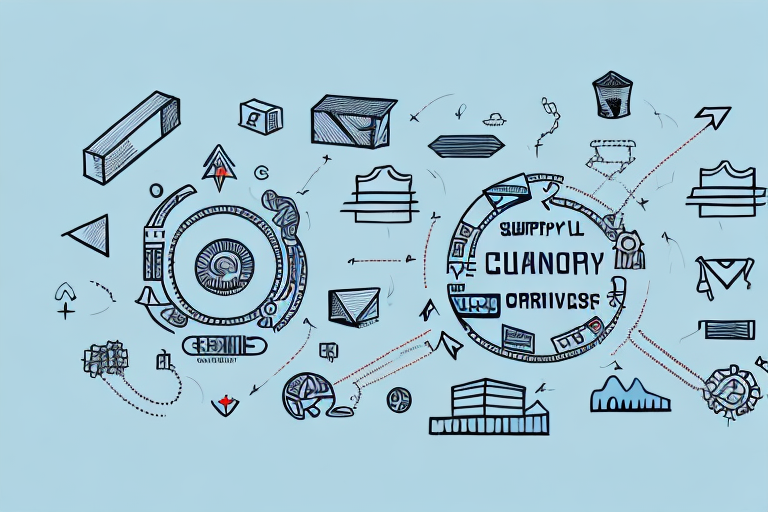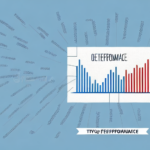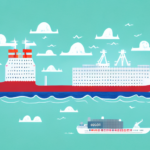Maximizing Total Insured Value in Your Supply Chain
If you are involved in supply chain management, you understand that risk is an inevitable part of doing business. From natural disasters to geopolitical tensions and economic shifts, a wide range of factors can disrupt your supply chain and cause financial losses. That's why Total Insured Value (TIV) is an essential concept to understand and prioritize in your supply chain strategy. In this article, we will explore the concept of TIV, why it is critical for supply chain management, how to calculate it, and strategies for maximizing it.
Understanding the Concept of Total Insured Value (TIV)
Simply put, TIV is the total value of all physical assets in your supply chain that are covered by insurance. These assets include raw materials, inventory, equipment, and finished products. TIV is a crucial metric because it determines the level of insurance coverage needed to protect your assets against unforeseen circumstances that can potentially disrupt your supply chain.
It's important to note that TIV is not a fixed value and can change over time. As your business grows and expands, the value of your assets may increase, necessitating adjustments to your insurance coverage. Additionally, changes in market conditions or supply chain disruptions can impact the value of your assets and your TIV.
Calculating your TIV requires a comprehensive inventory of all your physical assets, including their current market value. Collaborate with a trusted insurance provider to accurately determine your TIV and secure appropriate coverage to protect your business. For more information, visit Shipscience.
Why TIV is Critical for Supply Chain Management
Having an accurate and up-to-date TIV enables strategic decisions regarding insurance coverage, risk mitigation, and supply chain optimization. Without a clear understanding of your TIV, you risk being underinsured and vulnerable to significant financial losses in case of a supply chain disruption.
According to a Deloitte report, effective risk management, including proper insurance coverage, can reduce supply chain disruptions by up to 30%. Understanding your TIV helps identify potential risk areas, allowing you to implement preventative measures to minimize exposure.
Additionally, TIV plays a pivotal role in negotiating favorable insurance rates. Insurance companies consider TIV a key factor in determining premiums, and an accurate TIV can help negotiate lower rates. A detailed TIV can also highlight over-insured areas, enabling adjustments to save on premiums.
Key Factors that Affect TIV in Your Supply Chain
The total insured value of your supply chain can fluctuate based on several factors:
- Inventory Levels: Increased inventory raises TIV, while reduced inventory lowers it.
- Asset Valuation: Rising prices of raw materials or equipment enhance TIV, whereas depreciation decreases it.
- External Risks: Natural disasters, geopolitical instability, and supply chain disruptions can impact TIV.
- Security Measures: Enhanced security protocols can protect assets, maintaining or increasing TIV.
Implementing robust security measures, such as surveillance systems and cybersecurity protocols, is essential. According to the IBM Security Report, companies with advanced security measures reduce the likelihood of asset loss by 40%.
How to Calculate TIV for Your Supply Chain
Calculating your TIV involves the following steps:
- Identify Assets: List all physical and intangible assets in your supply chain.
- Assess Value: Determine the replacement or actual cost of each asset.
- Aggregate Values: Sum the values to obtain the total insured value.
Working with an insurance professional ensures accurate valuation and comprehensive coverage. Remember to include intangible assets such as intellectual property and brand reputation in your TIV calculation.
Regularly review and update your TIV to reflect changes in asset values and market conditions.
Importance of Accurate and Up-to-date Data in TIV Calculation
Accurate and current data is vital for precise TIV calculation. Regular updates prevent discrepancies and provide a clear snapshot of your total insured value at any time. Investing in supply chain management software can facilitate tracking and updating your TIV efficiently.
Accurate data helps identify potential risks or coverage gaps. A Supply Chain Management Review highlights that companies with high data accuracy are 25% more likely to achieve optimal TIV levels.
Furthermore, precise data strengthens negotiations with insurance providers, leading to better rates and coverage options tailored to your risk profile.
Top Strategies for Increasing TIV in Your Supply Chain
Implement the following strategies to enhance your TIV and safeguard your supply chain assets:
- Invest in Technology: Adopt new technologies and equipment to boost efficiency and asset value.
- Comprehensive Insurance Coverage: Ensure all physical assets, including inventory and equipment, are adequately insured.
- Collaborate with Partners: Work with suppliers to implement risk mitigation strategies.
- Regular TIV Updates: Keep your TIV current to accurately reflect risk exposure and coverage needs.
Optimizing inventory management is also crucial. Implement systems that track inventory levels, identify slow-moving items, and maintain optimal stock levels to reduce the risk of stockouts or overstocking, both of which can affect your TIV.
Prioritizing supply chain visibility ensures a clear understanding of all processes, enabling the identification of bottlenecks and areas for improvement. Enhanced visibility leads to increased efficiency and a higher TIV.
The Role of Insurance in TIV Management
Appropriate insurance coverage is essential for managing your TIV. Insurance provides financial protection against supply chain disruptions caused by natural disasters, theft, accidents, and other unforeseen events. Partner with an experienced insurance professional to identify the right type and amount of coverage tailored to your supply chain needs.
For more insights on insurance strategies, refer to Shipscience's resources.
Choosing the Right Insurance Policy for Your Supply Chain
Selecting the appropriate insurance policy involves evaluating various options:
- Property Insurance: Covers physical assets against damage or loss.
- Liability Insurance: Protects against legal liabilities arising from business operations.
- Cargo Insurance: Covers goods in transit against loss or damage.
- Business Interruption Insurance: Provides coverage for lost income due to supply chain disruptions.
Carefully assess the features and benefits of each policy type to ensure comprehensive coverage that aligns with your supply chain's unique requirements.
Common Mistakes to Avoid When Managing TIV in Your Supply Chain
To effectively manage your TIV, avoid the following common mistakes:
- Underestimating Asset Value: This can leave you underinsured in case of a loss.
- Failing to Update TIV: Regular updates are crucial to maintain accurate risk exposure.
- Inadequate Insurance Coverage: Selecting the wrong coverage can expose you to unnecessary risks.
- Lack of Collaboration: Failing to work with suppliers and partners can hinder effective risk mitigation.
Collaborating with Suppliers and Partners to Maximize TIV
Effective collaboration with suppliers and partners is key to maximizing your TIV. Jointly develop a risk management plan that involves all stakeholders, fostering a culture of transparency and accountability. This collaboration can lead to more efficient risk mitigation strategies and ensure that all assets are properly accounted for.
Future Trends in TIV Management and Supply Chain Optimization
As supply chains become increasingly complex and global, the importance of TIV management and supply chain optimization continues to grow. Emerging technologies such as the Internet of Things (IoT), blockchain, and artificial intelligence (AI) are set to revolutionize this field. These technologies offer greater transparency and real-time data analysis, enabling more precise risk management and insurance coverage.
According to McKinsey & Company, companies that adopt these technologies can improve their TIV management efficiency by up to 20%.
Case Studies: Success Stories of Companies that Maximized TIV in Their Supply Chains
Here are examples of companies that successfully maximized their TIV through effective risk mitigation strategies:
- Company A: Implemented a comprehensive risk management plan in collaboration with suppliers, identifying potential risks and executing preventative measures. This approach increased their TIV while reducing overall risk exposure.
- Company B: Invested in advanced technology and equipment, enhancing supply chain efficiency and increasing the value of physical assets. This investment led to a significant rise in their total insured value and improved overall risk management.
Best Practices for Maintaining Optimal TIV Levels in Your Supply Chain
Consider the following best practices to maintain optimal TIV levels in your supply chain:
- Regular TIV Updates: Continuously update your TIV and collaborate with insurance professionals to ensure accurate asset valuation and coverage.
- Supplier Collaboration: Work closely with suppliers and partners to implement effective risk mitigation strategies and foster a culture of transparency.
- Invest in Technology: Adopt new technologies and equipment to enhance efficiency, productivity, and the value of your physical assets.
- Insurance Review: Periodically review and evaluate your insurance coverage to ensure it aligns with your evolving risk profile and supply chain needs.
Conclusion: The Importance of Prioritizing Total Insured Value in Your Supply Chain Strategy
In summary, maximizing your TIV is a critical component of your supply chain management strategy. By prioritizing TIV, you can protect your physical assets against supply chain disruptions and financial losses, while also identifying potential risks and optimization opportunities. Regularly update your TIV, invest in new technologies, collaborate with suppliers and partners, and select the right insurance coverage to meet your unique supply chain needs.
For more information and resources, visit Shipscience.






















